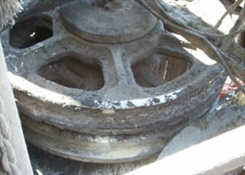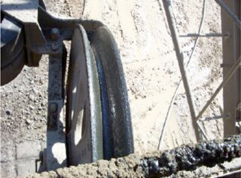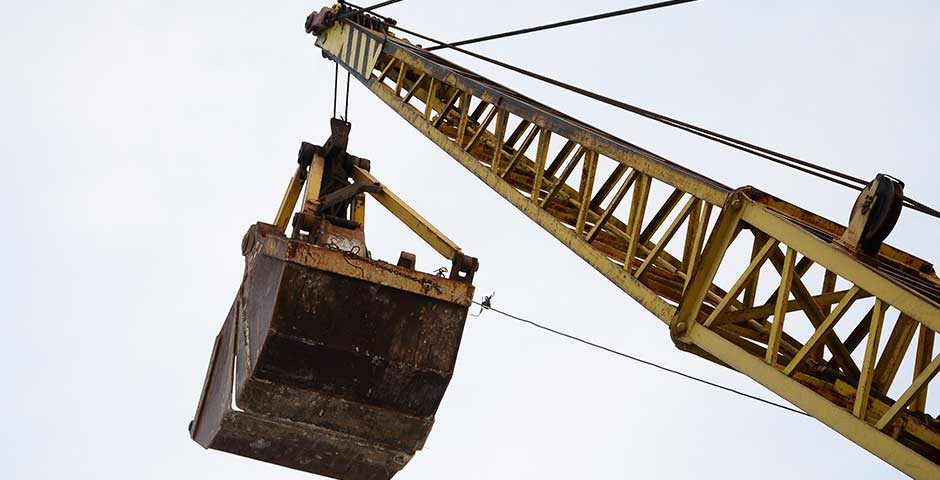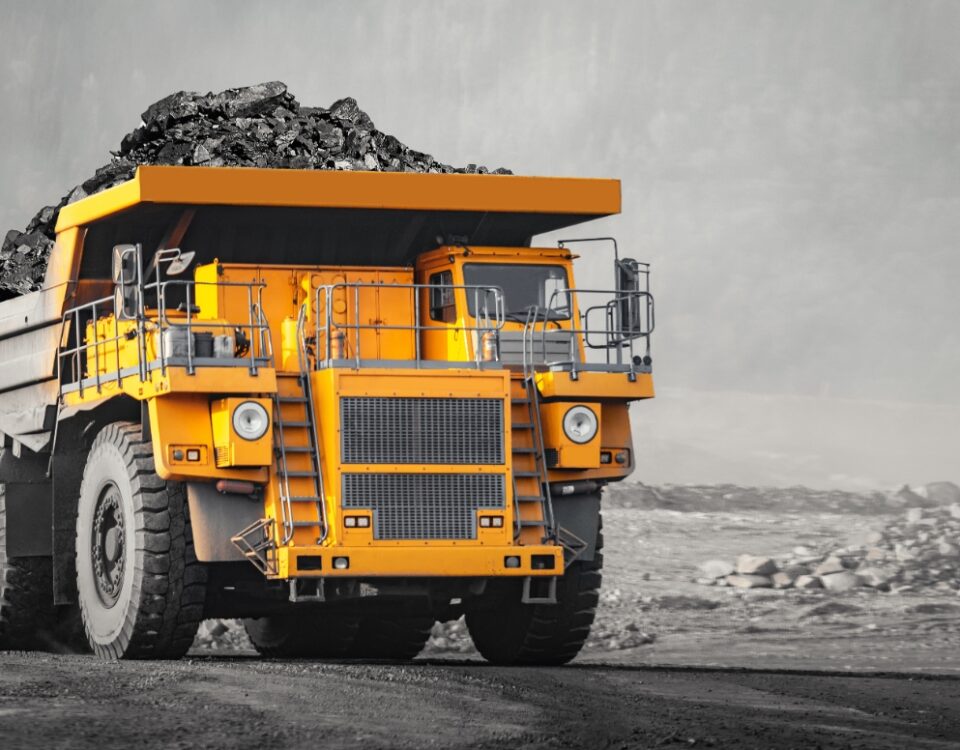Achieve Maximum Wire Rope & Sheave Life on Draglines with Bel-Ray Drag Cable Lubricant

Grease-Type Open Gear Lubricants
August 29, 2018
Bel-Ray Addresses Kyoto
February 11, 2019Goal – to maintain a thick lubricant film on the sheaves and to have that lubricant film almost dry to touch or tacky dry. The rope lubricant must be able to maintain a boundary layer or sacrificial lubricant film on both the sheaves and drag ropes. The action of the ropes running over the sheave, will wear away this sacrificial boundary layer. Therefore, the rope lubricant must be able to establish and maintain a high retention lubricant film for periods of 30 minutes or more without replenishment.

Under-lubrication will cause premature rope failure and fatigue breaks. This will normally happen on drag ropes 20 to 30 meters back from the bucket.
Over-lubrication – If there is too much lubricant going onto the sheave the lubricant film will be too wet resulting in poor retention on the sheave. This means too much lubricant will be transferred to the rope – this wet film will attract dirt and dust. Then as the rope runs over the sheave with the dirt and dust adhered to the ropes, they will cause wear to both the rope and the sheave at the slide load contact points. Over-lubricating the sheaves will result in a very thin boundary layer between the rope and sheave. This lubricant film will be thinner than the dust particles adhered to the rope, which causes wear.
Under-lubrication – If there is not enough lubricant going onto the sheave, you will have a dry rope and dry sheave, which means full metal-to-metal contact in the high load areas causing plastic deformation and fatigue breaks.
Bel-Ray has been producing high performance mining products for years. Bel-Ray provides professional infield lubricant application advice as part of our ongoing customer service support. We know what is expected of our mining lubricants and we know how they work and how to get the best possible performance from them. Through extensive research and development Bel-Ray has produced a unique dragline rope lubricant — Bel-Ray Drag Cable Lubricant

Over-lubrication will attract dirt and dust onto ropes, and the lubricant will struggle to maintain a consistent lubricant film between ropes and sheaves.
Bel-Ray Drag Cable Lubricant has been formulated to achieve and maintain the correct sheave and rope coverage. Most dragline rope lubricants available today do not change in consistency when applied to the ropes and sheaves, resulting in poor lubricant retention properties, hard to maintain lubricant films on both sheaves and ropes, along with high consumption rates. Rope lubes with poor retention properties when used on draglines will cause excessive lube fling-off inside the dragline house. This results in increased housekeeping with operators turning the lube system off to decrease lubricant discharge from both the hoist and drag ropes.
Does this sound familiar?
Many rope lubricants manufactured today are oil- or grease-based, designed to penetrate into the rope core. This type of rope lubricant works well in many applications, however, when you are talking about lubricating dragline hoist and drag ropes, from Bel-Ray’s experience, this type of rope lube does not perform well.
Why?
The loads placed on both the hoist and drag ropes on draglines, especially large diameter (85 mm to 150 mm) ropes, are huge. Most, if not all, rope manufactures pre-lube these ropes internally during the manufacturing process. When new drag or hoist ropes are installed on a dragline, a large amount of the pre-lube oil will be extruded from the internals of the rope because of the huge forces placed on the rope causing it to stretch and twist as it runs over the sheaves. The re-lubrication of these ropes is normally by spray or dripper, with the lubricant being applied to the sheaves, or in some cases drippers will apply the rope lube to the top of the drag ropes with the excess transferred to the sheave.
The hoist ropes will normally have drippers at the boom point sheaves directed onto the hoist ropes at 11:00 o’clock in front of the sheaves. This is where the rope will flatten slightly and open the outer strands to allow some penetration to the external strands. Some draglines, such as Marions, are fitted with sprays or drippers at the gantry sheaves, which are also lubricated using drippers or sprays. Normally the boom point drippers will apply rope lube to the front two-thirds of the hoist ropes. If hoist gantry drippers are operating, they will re-lubricate the back third of the hoist ropes and the hoist drum.
However, many draglines only lubricate the hoist ropes at the boom point. Based on inspections of both hoist and drag ropes which have been sectioned, there is no evidence that the lube being applied to the externals of the hoist and drag ropes penetrates any deeper than the outer strands. This is understandable when you consider the huge forces applied to the ropes. This is why using a penetrating type rope lube on dragline ropes is a waste of time. We need to protect the outer strands of the ropes, sheaves and the rope drum. The lubricant applied to the ropes during manufacture will give the best and only protection to the inner cores of the ropes.
Wet oil type rope lubes, especially on drag ropes, will not form a tough lubricant film; they will however attract dirt and dust resulting in fling-off from the ropes inside the house. Bel-Ray Drag Cable Lubricant will form a tough lubricant layer on both the sheaves and the drag ropes almost dry to touch.
When using Bel-Ray Drag Cable Lubricant on hoist ropes, we need to apply enough rope lube each time to build up a thick outer layer on the external rope strands. This layer will remain pliable, sealing the rope, stopping moisture, etc. from penetrating the internal strands.
Once the hoist ropes are end for ended, this thick layer of Bel-Ray Drag Cable Lubricant which has built up on the front two-thirds of the hoist ropes will afford some protection for the hoist drum and the back third of the hoist ropes through to the end of hoist rope life.
In most cases once the hoist ropes have been end for ended, the pre-lube oils excreting from the internals of the rope have stopped coming to the surface of the outer strand and the back third of the hoist ropes and the hoist drum can dry out completely. This situation is most common on draglines which only have lubricant applied at the boom point. Wear, commonly called rifling, may start to appear on the hoist rope drum. This condition is called rifling because it looks like the rifling you can see when you look down the barrel of a rifle. You need to get some lube back onto the hoist drum and the back third of the hoist ropes; this can be applied manually with a bucket or spray canister. In some cases a drop down spray bar has been installed at the back of the hoist rope drum connected to the main open gear lube line running to the hoist open gears. This system will fire when the open gear lube system operates and can be left in place until a sufficient lubricant coating is applied to the hoist ropes and hoist drum.
Proven Results
We’ve taken the time to make a comparison of BCM results from all the P&H 9020 draglines operating in Australia. One of the 9020s running 114 mm ropes has been using Bel-Ray Drag Cable Lubricant for the past 3.5 years. Your customers need to know that the best performing P&H 9020 on BCMs achieved for both hoist and drag is the P&H 9020 running on Bel-Ray Drag Cable Lubricant.



